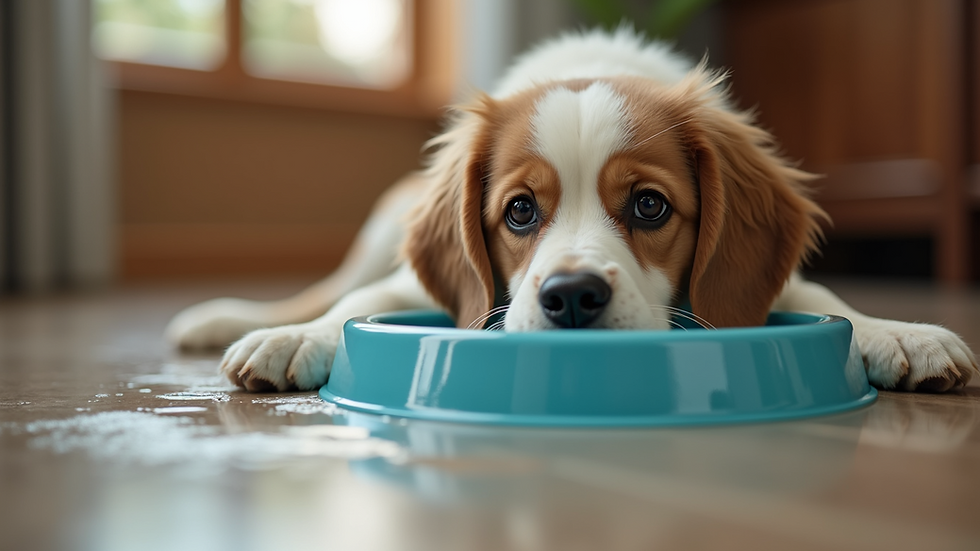Essential Strategies for Ensuring Your Dog's Safety During Hot Weather
- Frank Taylor
- Jun 20
- 4 min read
As temperatures soar, ensuring your dog's safety becomes a top priority for all pet owners. Hot weather can lead to severe health issues, including heatstroke and dehydration. This guide offers practical strategies to keep your furry friend safe during the sweltering summer months.
Understanding Heat Risks for Dogs
Dogs are generally more sensitive to heat than humans. Unlike us, they cannot sweat effectively. Instead, they rely on panting to cool down, which is made difficult by their fur. Breeds like Bulldogs and Pugs, with their short muzzles, are particularly vulnerable. It is important to keep an eye on the temperature; for reference, temperatures above 26°C (78°F) can be concerning for dogs, especially during exercise.
Heat exhaustion can escalate within minutes. For instance, the temperature inside a parked car can reach 48.9 degrees Celsius within just 30 minutes, posing an immediate risk to dogs left inside. Knowing the signs of heat-related illness—such as excessive panting, drooling, and weakness—can be a lifesaver.
Keeping Your Dog Hydrated
Hydration is key to keeping your dog cool. Always provide access to fresh, clean water, especially when you're outside. A portable water bottle designed for dogs can be a game-changer on outings to the beach or park, ensuring they drink enough to stay hydrated.
Here are some fun ways to keep them interested in water:
Use ice cubes as treats.
Freeze food filled toys such as Kong's or lick mats to provide a refreshing surprise.
Adjust Walk Times
To minimize heat exposure, plan walks during cooler times of the day, like early mornings or evenings. Avoid walking during peak sun hours when temperatures can soar to 90 degrees Fahrenheit or higher.
When out, consider shaded paths or grassy areas. If walking on pavement, test the ground with your hand. If it's too hot for you, it’s certainly too hot for your dog’s paws. Walking during cooler times can reduce the risk of paw pad burns by up to 70%.
Fun Water Games for Dogs Using a Paddling Pool
Splash and Fetch: Toss floating toys in the pool for your dog to retrieve.
Treasure Hunt: Toss treats that float for your dog to find.
Sprinkler Splash: Combine a sprinkler (if your dog enjoys this), with the pool for added fun.
Safety Tips
Always supervise your dog in the water.
Ensure the water is clean and chemical-free.
Provide fresh water for hydration.
Provide Shade and Cooling Areas
A shady spot is essential for your dog during outdoor play. Whether using umbrellas, canopies, or planting trees, creating a cool area allows your dog to escape the sun.
Setting up a kiddie pool can be a great way for your dog to cool off while also having fun. Dogs love splashing around, and this simple feature can drastically lower their body temperature.

Don't Leave Dogs in Cars
One of the leading causes of heat-related incidents is leaving dogs in locked cars. Temperatures can spike up to 20 degrees higher than the outside within minutes. If you must run errands, leave your dog at home in a cool environment.
Seek dog-friendly spaces where dogs are allowed indoors. Remember, there is always a risk; protecting your pet should be your main concern.
Know Your Dog’s Breed and Health
Specific breeds are more susceptible to heat-related issues. Brachycephalic (flat-faced) breeds like French Bulldogs are at greater risk of heatstroke. Older dogs and those with health issues like obesity can also struggle more than healthy dogs of the same age.
Understanding your dog's unique health needs empowers you to make better decisions. For example, if you own a young Labrador, scheduling short play sessions, while ensuring frequent breaks, can help them thrive safely in the heat.
Signs of Overheating
Watch your dog closely while they're outside to identify potential overheating signs. Warning signals include:
Heavy panting
Excessive drooling
Weakness or lethargy
Rapid heart rate
If you notice these symptoms, move them to a cooler area immediately, offer them water, and contact your veterinarian for advice. Early intervention can make all the difference.
Using Dog Cooling Products
Cooling products can be a worthwhile investment for your dog’s health during hot months. Items like cooling vests, bandanas, and mats utilize evaporative cooling technology to lower your dog’s body temperature.
Some studies show that these products can reduce body temperature by as much as 15 degrees, making outdoor activities much safer and more enjoyable.
Regular Grooming and Fur Care
Regular grooming helps keep your dog feeling cool and comfortable in summer. Contrary to popular belief, shaving a dog's fur isn't the best method for cooling. Instead, regular brushing helps remove excess fur and dirt, making it easier for your dog to stay comfortable.
Aim to groom your dog at least once a week during hot months. This not only keeps them looking great but also helps regulate their body temperature effectively.
Keeping Your Dog Safe This Summer
Ensuring your dog's comfort and safety in the heat is a mix of proper hydration, smart scheduling for outings, and being alert to the signs of heat-related illnesses. By understanding your dog’s unique needs and proactively addressing heat risks, you can create an enjoyable, safe summer.
Implement these strategies, and watch your dog thrive in the summer sun. Enjoy your time together and prioritize their well-being throughout the warmer months.





Comments